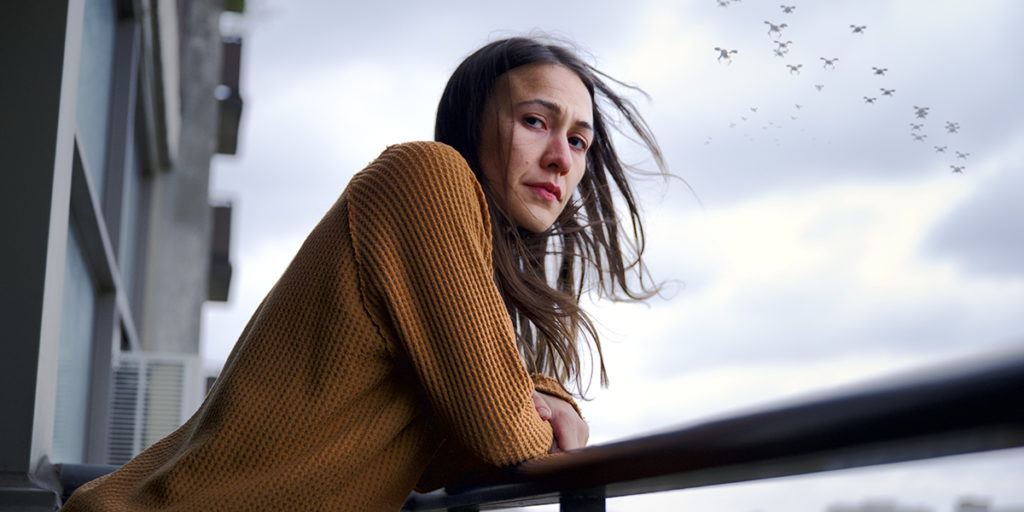Night Raiders

Image courtesy TIFF.
Contemporary messianic origin stories feature a common trope: a white man is born to an exceptional woman, who trains and guides him, only to be relegated to the background upon his ascension to leadership. Often this savior’s arrival is foretold by a “primitive” culture that he ultimately leads to salvation. Writers often imbue these figures with the “civility” of European culture, but capable of recognizing the “noble” qualities of the “savages” who bow to his inherent superiority. This narrative is pernicious in Western media, warping our concept of what heroes are. Paired with the protagonist-centered morality of corporate superhero fare, it feels as if we live in an age of men who answer the call to action through either prophesied obligation, or as a detour on the way to an “earned” domestic retirement. This is the natural result of white men writing the significant majority of our origin myths.
Danis Goulet’s NIGHT RIDERS upends this pattern, filling the tired rut with fascinating lore that fuses Cree animism and post-apocalyptic social stratification. In the 2040s, North America reels from the aftermath of war. A militaristic dictatorship rises from the ashes of what was Canada and America; children born to those unfortunate enough to be live outside the walls of Emerson State, and its promise of legitimacy in the form of Citizenship, are abducted and thrown onto the conveyor-belt system which mass produces ready-to-war cannon fodder.
Niska (Elle-Máijá Tailfeathers) raises her eleven year old daughter, Waseese (Brooklyn Letexier-Hart), in a trailer tucked deep inside the forest outside of the state’s prying eyes. They subsist on the land, but Waseese appears capable of more; she can commune with the wildlife around them. To hide a child for so long is an incredible feat, but time runs out when Waseese steps on a bear trap while game hunting. Her options to escape discovery narrowed, Niska and her daughter must seek out her old friend Roberta (Amanda Plummer) in a shantytown outside of Emerson’s perimeter. When sepsis sets in, Niska makes the impossible decision to surrender her daughter to the patrolling soldiers. It’s the only way Waseese can get the medical treatment required to survive.
Ten months pass and Niska ekes out a living selling various wares at the shantytown marketplace. She can’t suppress the guilt that plagues her, despite repeated attempts to convince herself that she did the right thing. Circumstances escalate, and the extent of Emerson’s systemic oppression is laid bare, from forced relocation to biological warfare (the historic use of smallpox infested blankets against native populations immediately comes to mind).
Niska encounters a band of Cree intent on rescuing their abducted children from Emerson State’s schools. When Margaret Atwood wrote The Handmaid’s Tale, she was careful that all of Gilead’s draconian policies were based on actual laws utilized to oppress women. Similarly, Goulet ensured the grotesque methods of indoctrination (“re-education”) and punishment meted out by Emerson’s academies directly mirrored the horror of Canada’s residential school system.
The film’s mythos captivated me, particularly the inventive incorporation of Cree animism, which holds the belief that all life forms and some inanimate objects have spirits. In line with the tribe’s respect for dream visions, a pivotal narrative development involves a Cree elder’s prophesy of a Guardian who helps save their children and defend their territory. To my delight, this character turns out to be neither a white man nor a cultural outsider, but rather represents the importance of empathy and community in the face of oppression. However, I can’t help but yearn for a deeper-dive into this world and its ethos: perhaps a mini series would’ve served the story and characters better.